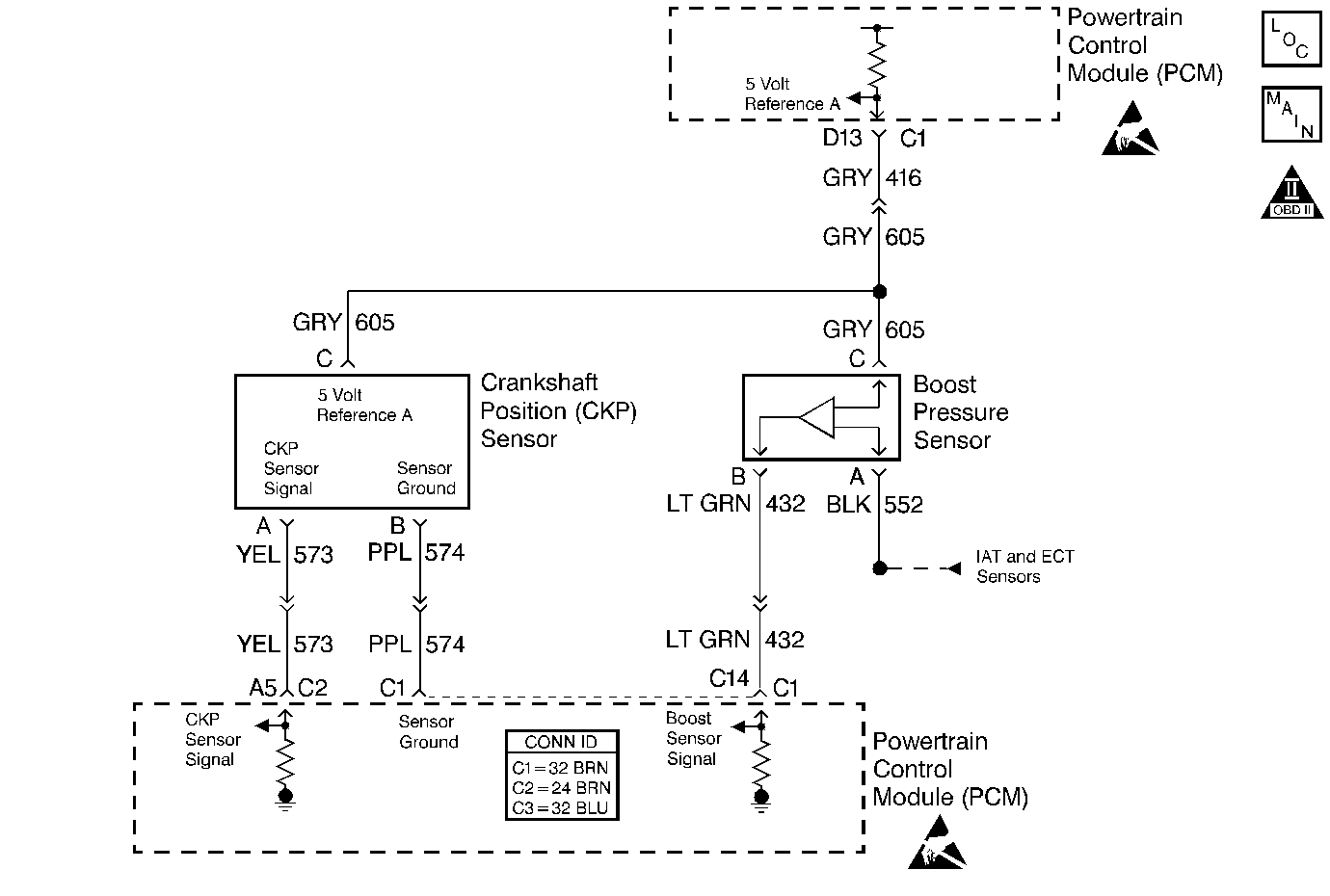
Circuit Description
The PCM provides a 5 volt supply for use in powering up the sensors. This test monitors the voltage present at terminals BRD13 (shared by boost and crankshaft position sensors) and BRD14 (the optical/fuel temperature sensor (Cam/HI. Res)).
Conditions for Setting the DTC
The ignition switch in the on position.
Conditions for Setting the DTC
The 5 volt reference is less than 1 volt.
Action Taken When the DTC Sets
| • | The PCM will not illuminate the malfunction indicator lamp (MIL). |
| • | The PCM records the operating conditions at the time the diagnostic fails. This information is stored in the Failure Records. |
Conditions for Clearing the MIL/DTC
| • | A History DTC will clear after forty consecutive engine warm up cycles, if this or any other emmision related diagnosic does not report any failures. |
| • | Use of a scan tool will clear the DTC codes. |
Diagnostic Aids
During the time the failure is present, the setting of additional DTCs that share a 5 volt reference may also set.
Test Description
Number(s) below refer to the step number(s) on the Diagnostic Table.
-
Checks to confirm that a DTC is still present.
-
Checks to determine if there is a 5 volt reference from the PCM.
-
Checks to determine if there is a short-to-ground in the reference circuit or a short-to-ground in the PCM.
-
This step determines if the short is being caused by one of the sensors on the engine or the short is in the wiring harness.
Step | Action | Value(s) | Yes | No |
|---|---|---|---|---|
1 |
Important: Before clearing the DTCs, use the scan tool Capture Info to save Freeze Frame and Failure Records for reference. The control module's data is deleted once the Clear Info function is used. Did you perform the Powertrain On-Board Diagnostic (OBD) System Check? | -- | ||
Does the DTC reset? | -- | |||
Is the voltage less than the specified value? | 4.0 V | |||
Is the test lamp ON? | -- | |||
5 | The DTC is intermittent. If no additional DTCs are stored, refer to Diagnostic Aids. If additional DTCs were stored refer to those table(s). Are any additional DTCs stored? | -- | Go to the applicable DTC table | Go to Diagnostic Aids |
6 | Replace the Boost sensor. Refer to Boost Sensor Replacement . Is the action complete? | -- | -- | |
With the J 35616-200 unpowered test lamp still probing the boost sensor 5 volt reference circuit at the PCM, disconnect each sensor, one at a time, that shares the 5 volt reference with the boost sensor. Does the test lamp turn OFF when one of the sensors are disconnected? | -- | |||
8 |
Is the test lamp ON? | -- | ||
9 | Repair the short to ground in 5 volt reference circuit. Refer to Wiring Repairs. Is the action complete? | -- | -- | |
10 |
Important: The new PCM must be programmed. Refer to Powertrain Control Module Replacement/Programming . Replace the PCM. Is the action complete? | -- | -- | |
11 |
Does the scan tool indicate the diagnostic Passed? | -- | -- | |
12 | Does the scan tool display any additional undiagnosed DTCs? | -- | Go to the applicable DTC table | System OK |
